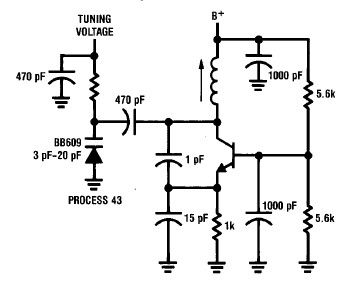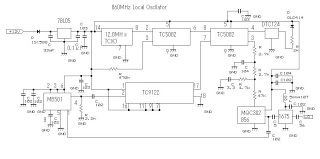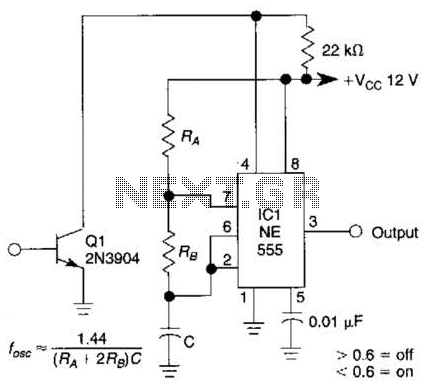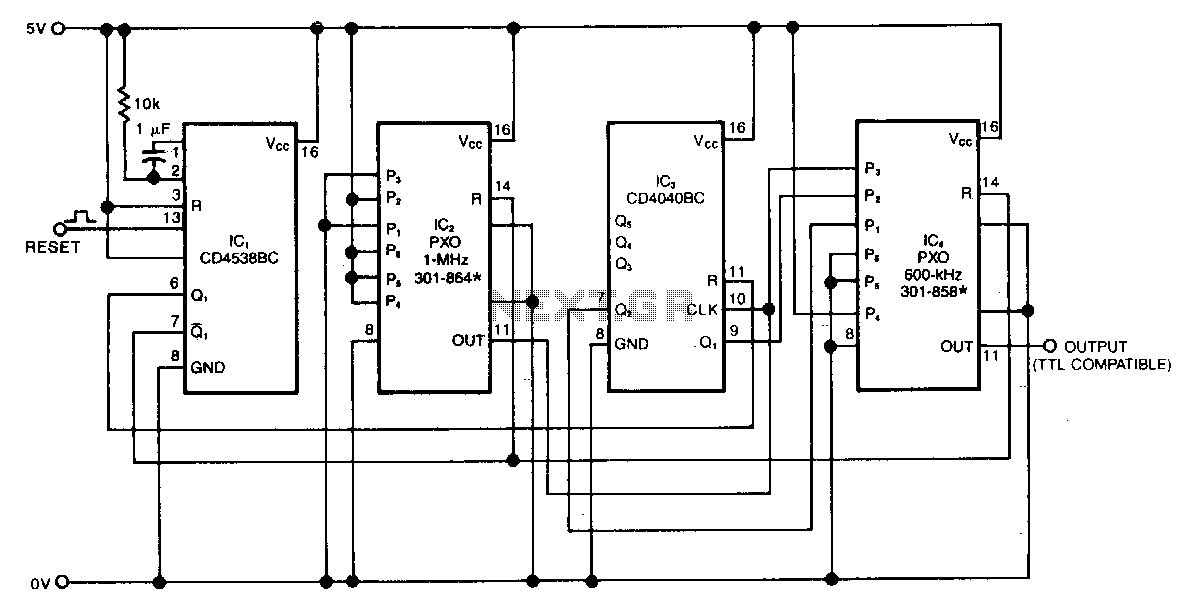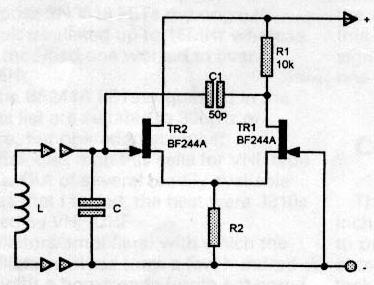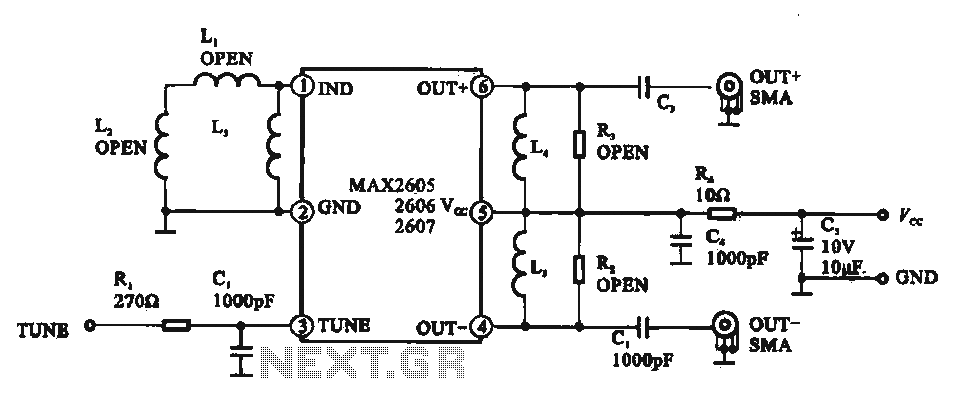
Fifth-overtone oscillator
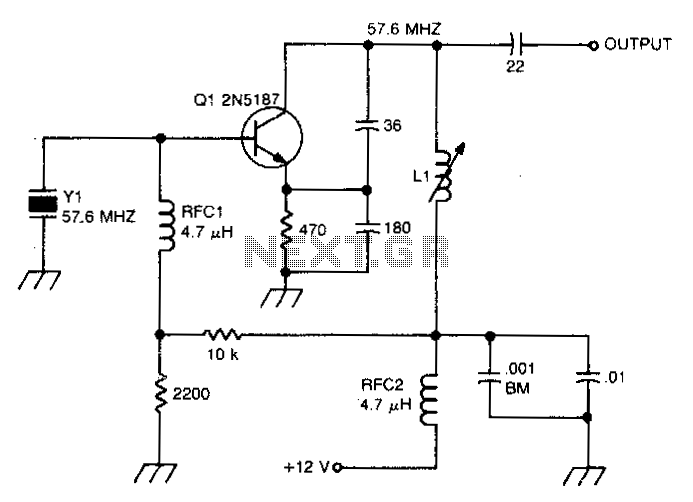
This circuit isolates the crystal from the DC base supply using an RF choke for improved starting characteristics.
The circuit design features an RF choke that serves as a crucial component for isolating the crystal oscillator from the DC base supply. The primary function of the RF choke is to block direct current while allowing alternating current (AC) signals to pass through. This isolation is vital for maintaining the integrity of the oscillation frequency generated by the crystal, which is sensitive to variations in supply voltage and noise from the DC source.
In this configuration, the RF choke is placed in series with the crystal oscillator circuit. The choke presents a high impedance to the DC voltage, preventing any DC components from affecting the crystal's operation. This ensures that the crystal can oscillate at its designated frequency without interference from the DC base supply. The improved starting characteristics refer to the circuit's ability to initiate oscillation more reliably and quickly, which is particularly important in applications requiring precise timing or frequency generation.
To enhance the performance further, the circuit may include bypass capacitors connected to ground. These capacitors help filter out any high-frequency noise that may still couple through the RF choke, ensuring that only the desired oscillation frequency is maintained. Additionally, careful selection of the choke's inductance value is necessary to match the operating frequency of the crystal, optimizing the circuit's overall efficiency.
In summary, this circuit effectively isolates the crystal oscillator from the DC supply using an RF choke, which not only protects the crystal from unwanted DC interference but also enhances the overall stability and reliability of the oscillator's starting characteristics.This circuit isolates the crystal from the dc base supply with an rf choke for better starting characteristics. 🔗 External reference
The circuit design features an RF choke that serves as a crucial component for isolating the crystal oscillator from the DC base supply. The primary function of the RF choke is to block direct current while allowing alternating current (AC) signals to pass through. This isolation is vital for maintaining the integrity of the oscillation frequency generated by the crystal, which is sensitive to variations in supply voltage and noise from the DC source.
In this configuration, the RF choke is placed in series with the crystal oscillator circuit. The choke presents a high impedance to the DC voltage, preventing any DC components from affecting the crystal's operation. This ensures that the crystal can oscillate at its designated frequency without interference from the DC base supply. The improved starting characteristics refer to the circuit's ability to initiate oscillation more reliably and quickly, which is particularly important in applications requiring precise timing or frequency generation.
To enhance the performance further, the circuit may include bypass capacitors connected to ground. These capacitors help filter out any high-frequency noise that may still couple through the RF choke, ensuring that only the desired oscillation frequency is maintained. Additionally, careful selection of the choke's inductance value is necessary to match the operating frequency of the crystal, optimizing the circuit's overall efficiency.
In summary, this circuit effectively isolates the crystal oscillator from the DC supply using an RF choke, which not only protects the crystal from unwanted DC interference but also enhances the overall stability and reliability of the oscillator's starting characteristics.This circuit isolates the crystal from the dc base supply with an rf choke for better starting characteristics. 🔗 External reference
